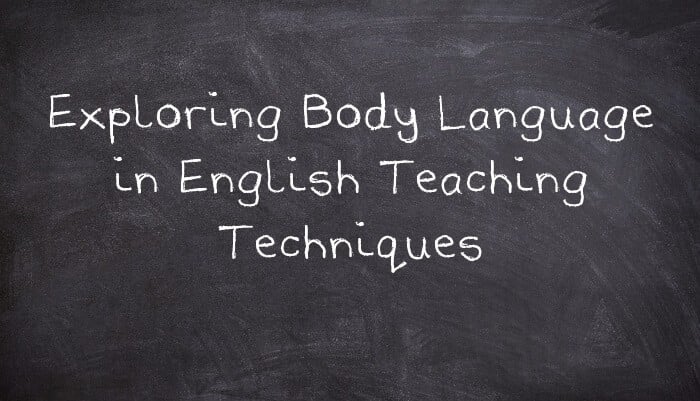How I use body language in my teaching
The physical body speaks language and is a wonderful tool to draw on to teach young learners English or anyone for that matter. I use physical gestures, emotions, actions, movement, voice, and eye contact to teach language to my young students. In no time, young learners begin to physically respond to language and understand its meaning.
Here are some things I do:
- Mimicking the body movements to teach verbs such as 'Sit', 'Stand', 'Walk', 'Run', 'Jump', 'Hop', 'Skip', 'Climb', and 'Swim', which can then be paired off with vocabulary to teach actions and commands such as 'Sit on the chair'.
- Emotions such as happy, sad, mad, hungry, tired, sleepy, hot, and cold can be taught by using the facial expression that expresses the stated emotion.
- Pointing to and touching the named part can easily teach body parts vocabulary. You can then use the eyes to teach the concept open and close (Open your eyes and Close your eyes).
- Miming actions with or without 3-D objects, commands such as 'Open your book', and 'Close your book' can be taught and easily understood by students.
- Using the voice to mimic animal sounds such as meow meow, woof woof, moo moo, one can teach animal vocabulary as well as enhancing the learning experience.
Body gestures I teach young learners
Here are some body gestures that I teach my young learners.
"I don't know."
The shoulders are hunched up briefly with the hands rotating in a palm-up position with the fingers spread.
"Request for attention."
The arm is raised with the palm showing at shoulder level and is held there until the gesture is acknowledged.
"Me?"
The palm of one hand is placed on the chest or the forefinger is pointed at the chest and remains touching it for a few moments.
"I have to go to the bathroom."
Cross legs tightly with fists on hips.
"Time out."
Hold one hand flat out with the other hand straight up making a letter T.
Perhaps, the above may ignite some sparks for you in your context. Good-luck!
